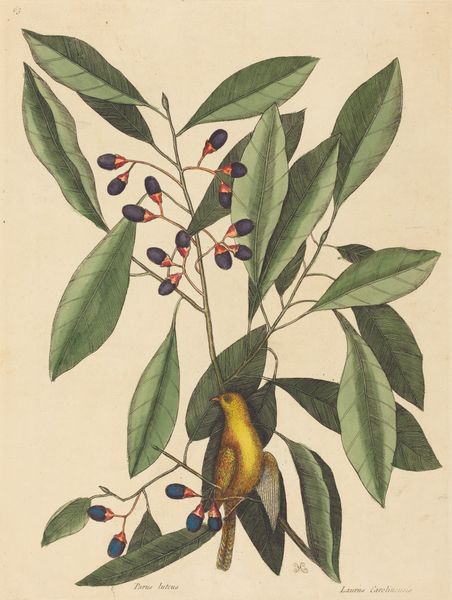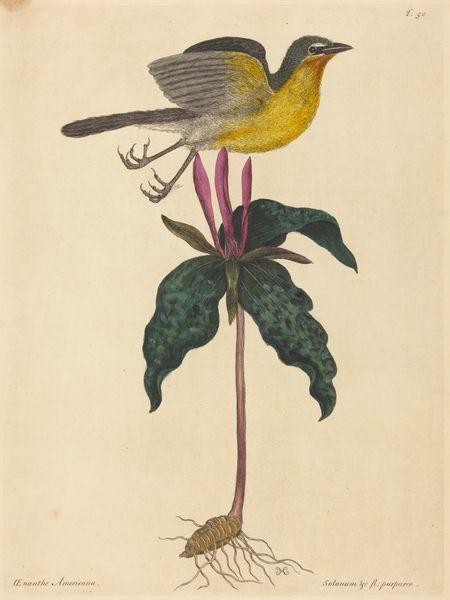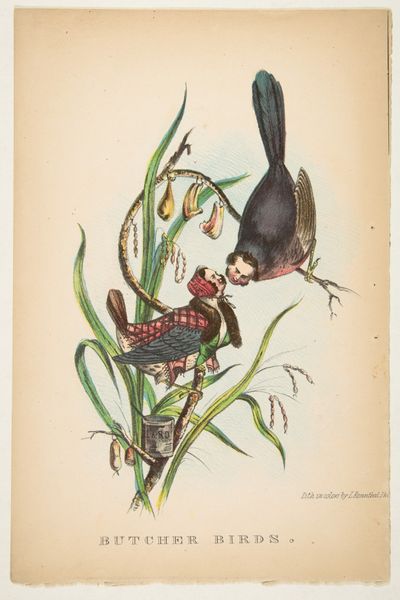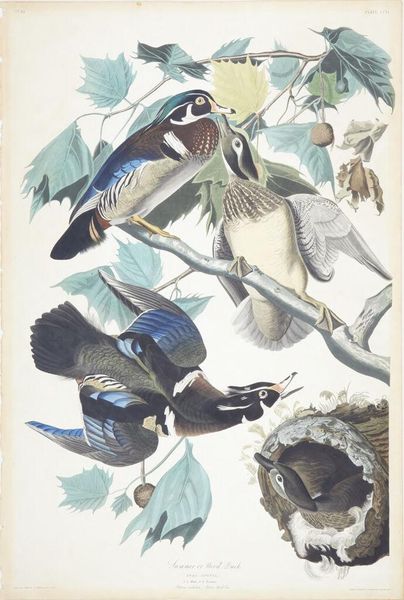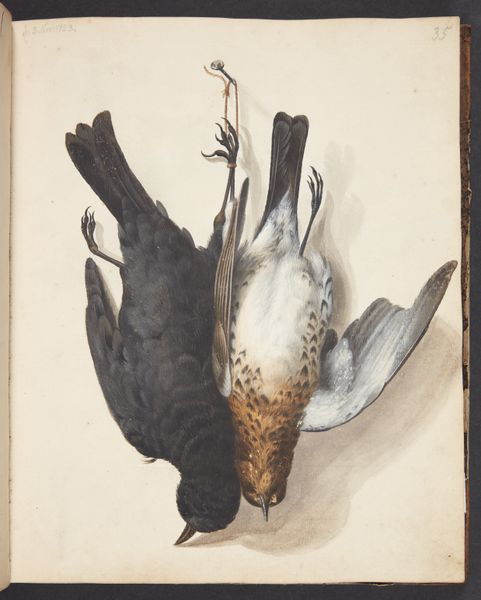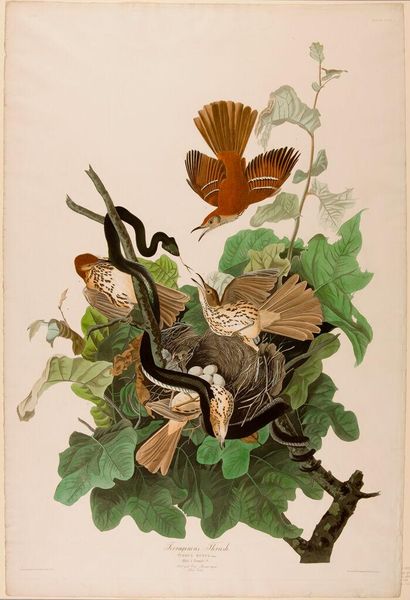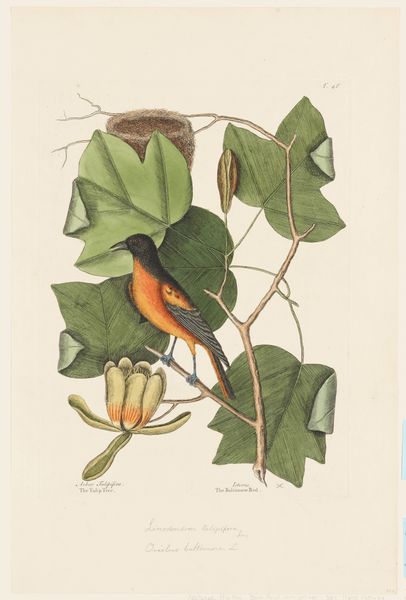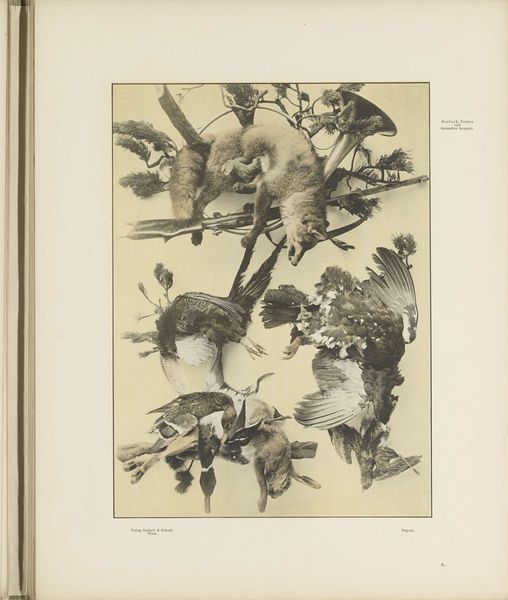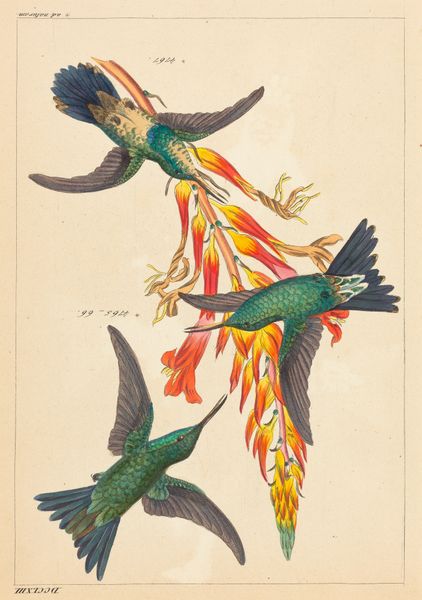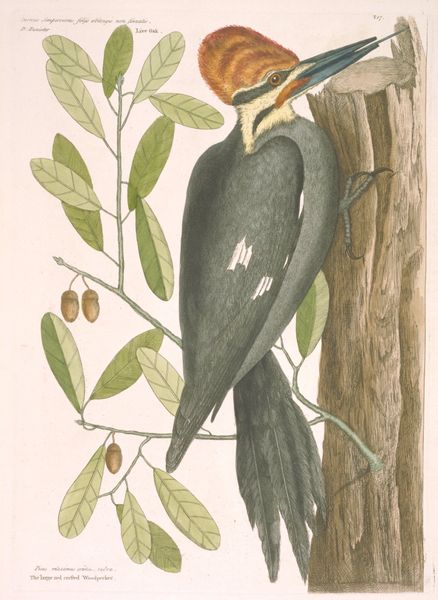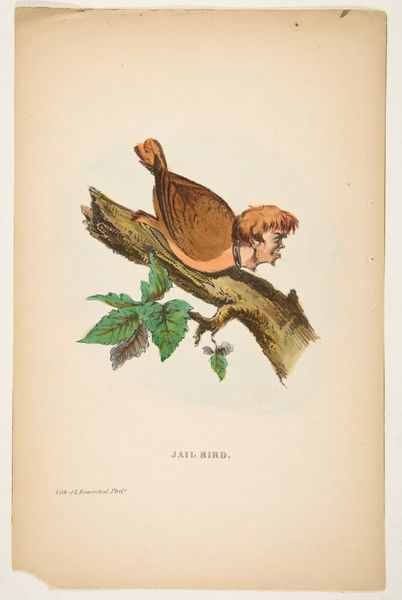
The Birds of America from Drawings Made in the United States 1842
0:00
0:00
drawing, coloured-pencil, print, plein-air, watercolor
#
drawing
#
coloured-pencil
# print
#
book
#
plein-air
#
bird
#
watercolor
#
coloured pencil
#
naturalism
#
botanical art
#
watercolor
Dimensions: book: 10 7/16 x 6 11/16 in. (26.5 x 17 cm) page: 10 x 6 3/8 in. (25.4 x 16.2 cm)
Copyright: Public Domain
Curator: I am immediately drawn to the serenity of this print. There is such gentle energy between the hummingbirds and trumpet vine blossoms. Editor: Absolutely. What you're responding to is John James Audubon's "The Birds of America from Drawings Made in the United States," created around 1842. Audubon's depictions naturalize American identity with romanticism. Curator: These naturalistic studies of the ruby-throated hummingbird provide a key into how Audubon conceptualized the landscape. What I notice in Audubon’s depictions is this intense attention to detail coupled with a spiritual weight given to each species in its landscape. How do we understand that weight today? Editor: Well, there's a complexity when considering Audubon, an ornithologist whose fame rests on celebrating biodiversity in an era of immense environmental change. His depictions ignore the impact colonization has had, which arguably informs what we think about with “naturalism” or plein air art today. He leaves out conversations of Indigenous ecological practices and the devastating impacts westward expansion had upon ecosystems, essentially creating an image of natural paradise to fuel destructive industries. Curator: Yet there is value in recognizing how these romantic interpretations shaped cultural perceptions of American wilderness at a particular historical moment, even in their troubled ways. We might also consider Audubon's choices concerning medium: print, colored pencil, and watercolor. There is a textural intensity. Editor: Precisely. By looking through these botanical studies we come to recognize the naturalized ideal against the historical reality and devastation faced by our natural ecosystems. These studies hold value because they mark that moment in time that should hold us accountable in protecting what's left. Curator: You’ve given me much to consider, contextualizing this natural beauty against complex colonial undercurrents that run throughout. Editor: And you've highlighted the importance of iconography for revealing layers of meaning behind surface aesthetics. It's this dual awareness, I think, that helps us to truly see art's relevance today.
Comments
No comments
Be the first to comment and join the conversation on the ultimate creative platform.
